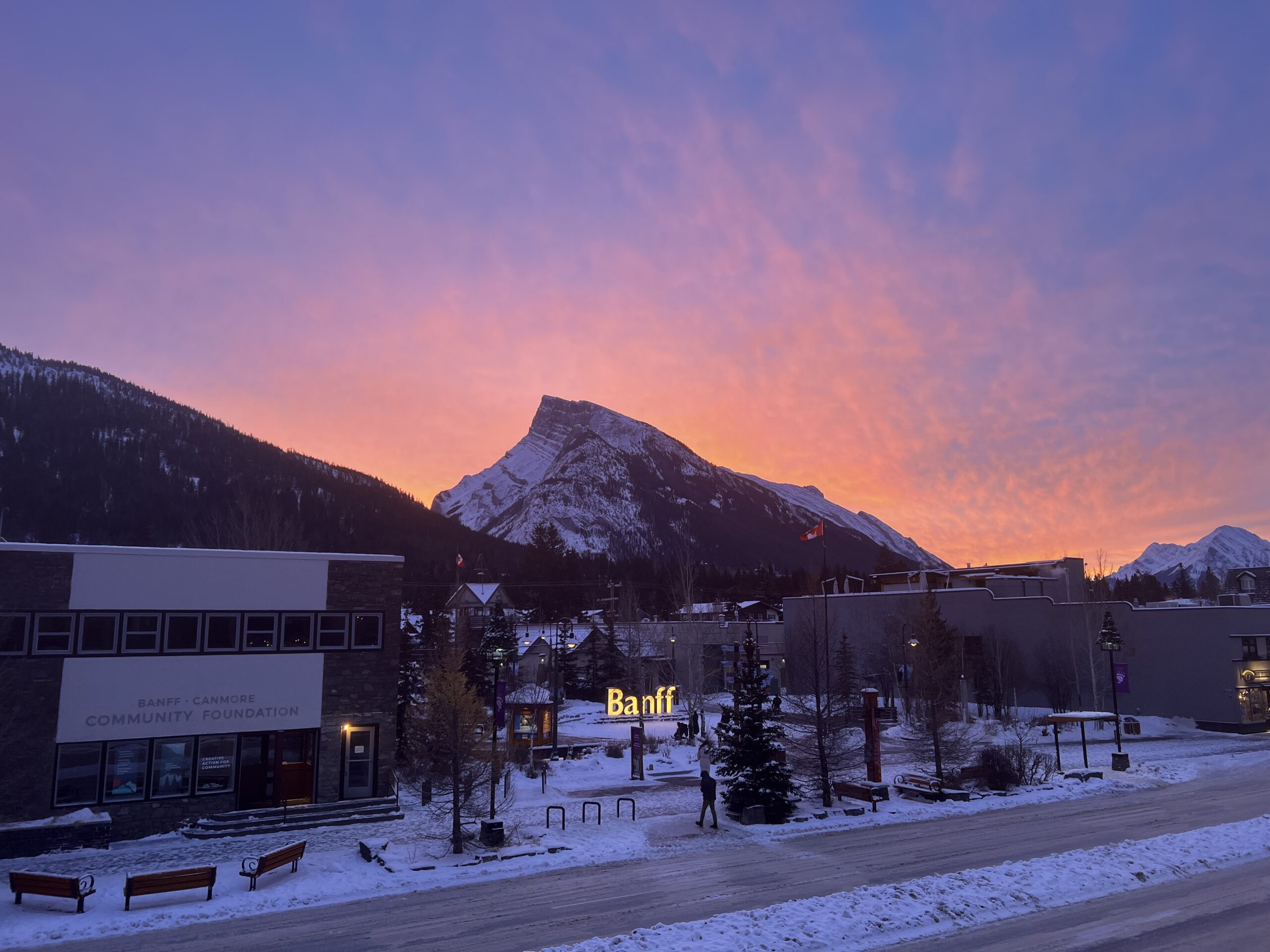
The Real Cost of Living in Banff on a Working Holiday IEC Visa – Winter 2024 Edition

So, you’ve got your visa, you’ve booked your flights and you’re heading to Banff for a winter in the Rockies! As one of the most beautiful places in Canada, Banff is unsurprisingly one of the most popular spots for working holiday visa holders. It also makes it one of the most expensive places to visit and live.
This is my second year living in Banff and, as much as I love life here, I definitely wasn’t prepared for how much it would cost. So with that in mind, I’ve broken down the financial reality of life in Banff, from income to expenses, and the necessities to the luxuries, so you can be prepared for what to expect if you decide to move here.
Contents
Housing
First things first, getting a roof over your head is likely your main priority and will also be your biggest expense. Housing is a pretty hot topic locally as it’s in such short supply for the amount of temporary foreign workers (TFWs) that arrive in town every year/season. Because of that, you have to be employed in town to live here – what’s known as ‘need to reside’. For example, you can’t live in Banff and work in Canmore, nor can you live here and work remotely.
If you’ve got your job sorted, there are a few of the different options you can consider for where to live in Banff in the winter:
$800 – $1200
Private rooms in a shared house are what most people will be looking for; usually with other Temporary Foreign Workers (TFWs), or sharing with longer-term locals who have a spare room. Expect to pay anything in the range of $800 – $1200 + bills, with the quality varying relative to the price.
Cheaper rooms can be pretty basic, dated and small, for example in a basement room or a room in an apartment with no outdoor space. Having eight housemates in one unit also isn’t unheard of! In the upper range of this budget you could be looking at a bigger room in a nicer house, a small household, and some kind of communal outdoor space or balcony.

$300 – $700
This is usually the cheapest living arrangement and one that most working holiday visa holders will try to snag, especially if you only plan on staying for a season. While it isn’t totally free, it is usually heavily subsidized by the company, so employees end up paying around $10 – $16 dollars a day for a room which is taken directly out of their paycheck. Rooms are usually shared between two to four people, which can be fine if you’re staying short-term or wanting to have a ski bum winter.
However, if you’re a little bit older and/or like having your own space, it can be difficult sharing a room with others, some of whom may be a lot younger. If you’re 30-years old, living with a group of 18-year olds partying every night might not be the vibe for you.

$1000 – $1500
In the winter, as there are less tourists in town, hostels open up for ‘long-stay’ bookings (usually start of October to end of April). If you’re determined to stay in town for the winter season this can be a good last-minute option and if you’re looking for a social nightlife it might be perfect for you! Expect to have dorm room shared with up to 13 other people and a sensitive liver by the end of it.
The HI Banff Alpine Centre has a ‘Job Seekers’ package for while you’re searching for work. It’s only valid between November and April, and includes 14-nights in a dorm room, two free drinks vouchers, 14-day local bus pass, and free CV printing. At the time of writing (January 2025), a two-week stay in a six-bed mixed dorm was $511 + taxes.
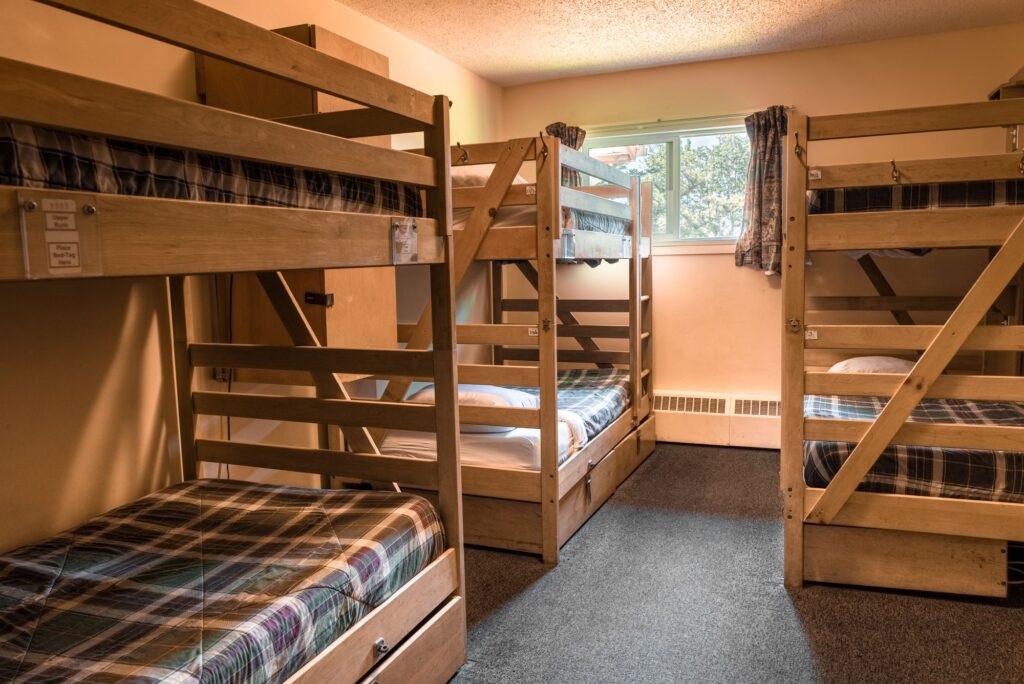
$1500 – $3000+
Renting your own unit is perhaps the ideal, and most elusive, accommodation option. Single units for one person or a couple do exist, but they’re not the norm, and are usually pretty expensive for what you get. Plus, it’s a lot less social, which is probably not what you want if you are here on a working holiday visa!
Becoming a leaseholder of a multiple occupancy unit is a lot easier and more feasible if you are a Canadian citizen or have Permanent Residence (PR), and with housing in such short supply currently, the only people I know who do this have been in town for many years. If you’re looking to share a house as a group of friends, you’ll be hard pushed to find anything in Banff, but might have more luck in Canmore.
Also, don’t forget that places will ask for a damage deposit before you move in! Set aside at least a month’s rent for private housing, and around $200 for staff accommodation deposits.
Groceries
As a remote mountain town, groceries in Banff are noticeable more expensive compared to larger cities in Canada. There are two main stores, Nesters Market and IGA; both are pretty small but have a decent selection of everything you could need. However, if you can, it’s generally cheaper to buy in the larger stores in Calgary, if you have that option.
On average, expect to spend $80-$150 a week on groceries, give or take depending on your diet etc. Here’s an example of some prices (as of January 2025):
- 1L of whole milk – $3.19
- Dozen eggs – $4.30
- Chicken breast (per kg) – $16 – $20
- Pasta –
- Canadian cheese (per
- Imported cheddar cheese (per 200g block) – $10
- 1kg peanut butter – $6.99
- Frozen pizza – $6.99
- Packet of biscuits/cookies – $4.99
If you’re on a budget, you can cut spending on groceries by taking advantage of the discount days which happen every month. IGA has a 10% Tuesday, which occurs on the first Tuesday of every month. Nesters recently changed to a 15% discount on the last Wednesday of every month. For more selection, you can also head to Canmore’s Save-on-Foods and Safeway supermarkets, prices are fairly similar if not a little cheaper than Banff, and they also have 10% Tuesday offers.
Otherwise, if you have a car, doing a big grocery trip in Calgary at Walmart or Safeway and buying non-perishable items in bulk can cut costs a lot. Many people have Costco memberships too to stock up on essentials at a lower price.
Local Transport
One huge advantage of living in Banff is that local transport buses are completely FREE for residents! This includes most of the ROAM transit buses, with the exception of Route 3 which goes to Canmore, and Route 8X which goes to Lake Louise.
You have to pay $5 for the card, and prove your residency status (just show your rental agreement or proof of employment). Your card will be good for six months, but even when it expires you can keep renewing as long as you are still a resident.
Eating out/Takeaways
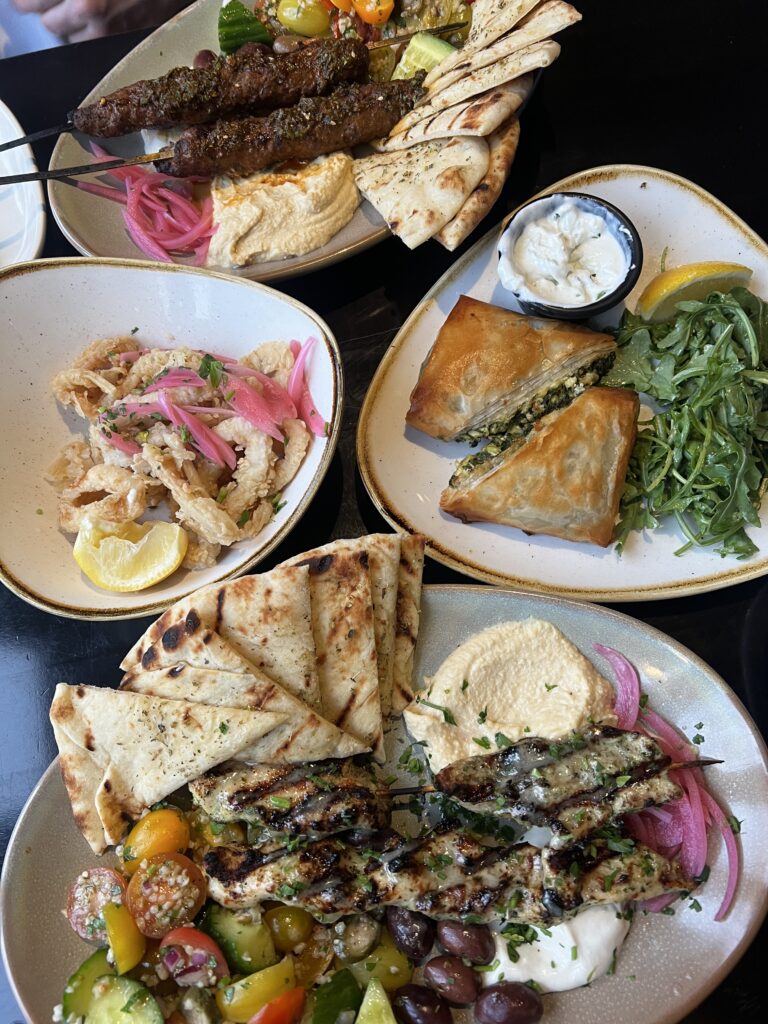


For such a small town, Banff has a LOT of restaurants, bars, coffee shops, etc. and given the reliance on tourism, it’s also pretty pricey. Entrees are around $20-$30 per person at a mid-range restaurant, but $40+ each at higher end establishment for dinner. And that’s just one course. Here’s a few examples of prices (correct as of January 2025):
- Classic Pepperoni Pizza at Lupo Italian Ristorante – $26.50
- Chicken Ramen Bowl at Hello Sunshine Japanese Restaurant – $19.75
- Alberta Premium 12oz Striploin (not including sides) at Chuck’s Steakhouse – $68
- The Eddie Classic Burger at Eddie Burger Bar – $24.75
- Exotic Wild Mushroom Ravioli at Nourish Bistro (Vegetarian/Vegan) – $28.28
While it’s not cheap, there are lots of deals and happy hours that you can take advantage of, especially in the winter season which is a slower time for restaurants. Make sure you always ask for a local’s discount too, which is usually around 10%. See this post for more information on Winter Happy Hours and deals in Banff.
Don't forget the tip
Unfortunately, tipping is huge in Canada, and is definitely expected in all restaurants and bars. The amount you should tip is contentious, but usually 15 - 22% is the range, depending on how you rated the service.
Skiing/Snowboarding
Snow sports is one the main reasons why people come to Banff for their working holiday winter season, but hitting the slopes ain’t cheap. Your main costs will be lift tickets and gear:
Season Passes
There are three main resorts – Sunshine Village, Lake Louise, and Mount Norquay – and you can get a season pass to just one, or access all of them with a SkiBig3 pass. For the Winter 2024/25 season, full-week season pass prices (not including tax) were:
- Mount Norquay – $1,129
- Lake Louise – $1,649
- Sunshine Village – $1,760
- SkiBig3 – $2,999
- Rocky Mountain Passport – $3,589
This is the maximum price you would pay – if you plan in advance you can get early-bird rates which are heavily discounted if purchased before October. You could also consider a mid-week pass, especially if you work weekends, and it is substantially cheaper than the full week pass. There’s also other offers that the resorts offer such as super cards which can work for you if you are only planning to go a couple of times in the season.
See this post for a detailed breakdown of buying a pass for a ski season in Banff!
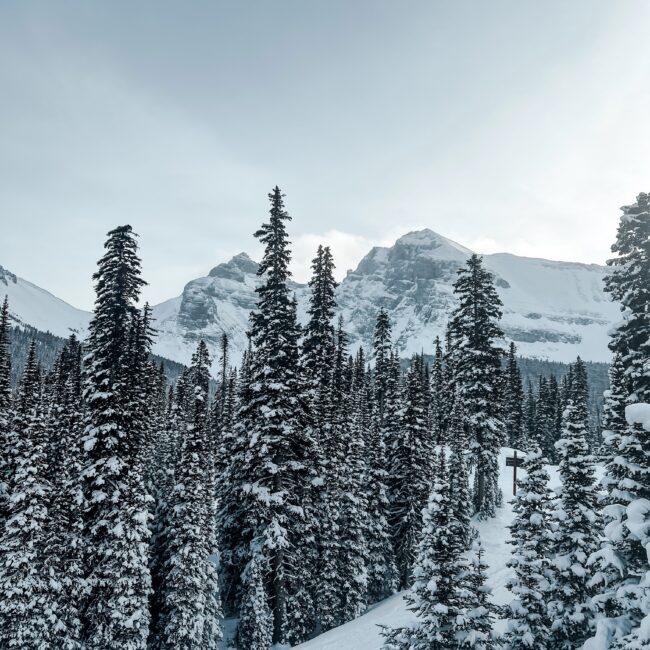

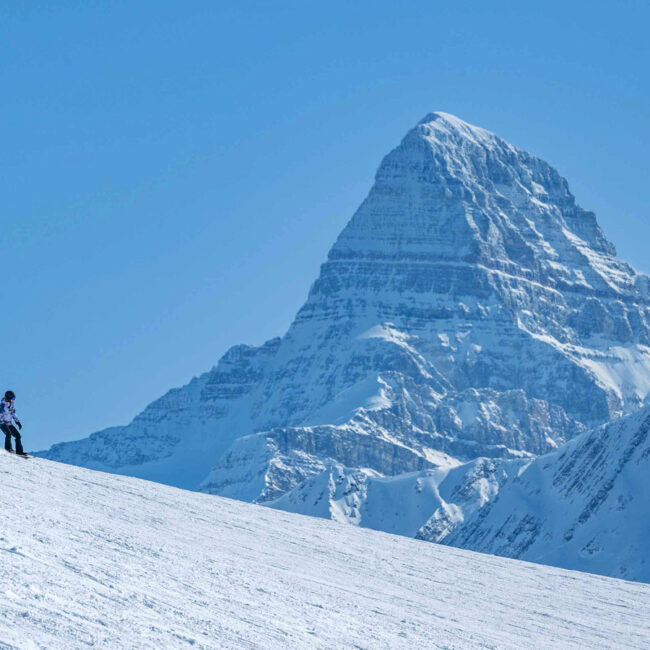
Winter Snow Gear
If you’re already a seasoned skier or snowboarder, chances are you’ll already have all of your own gear. In which case you’ll only need to budget for any upgrades you want to make, or any repairs/replacements. Tuning for gear can be done at the Tune Shop for around $30.
If this is your first snow season and you’re a beginner, gear will be a big one and probably one you’re not expecting to cost as much as it does.
I’d always recommend renting or borrowing skis or a board for your first couple of times. Who knows, you might hate it and that’s ok! Just don’t spend $100’s on the sport just yet until you know you want to stick with it. Once you’ve had a lesson or two, and you’re looking to invest, here’s the kind of prices you can expect for a beginner set-up:
- Beginner snowboard (such as the Salomon Lotus) – $400
- Bindings – $160
- Boots – $300
- Helmet – $170
- Goggles – $75
- Snow Jacket – $300
- Snow Pants – $300
- Snow Gloves – $100
Total: $1,805
Now, don’t get me wrong, you could definitely do this for cheaper. Take advantage of sales, discount stores in town (like Rude Boys Outlet, downstairs in Sundance Mall), second-hand gear on Facebook Marketplace, etc. But this is the ballpark figure of how much entry-level gear costs.
You could also add to this extras like base layers, toques, glove liners, stomp pads, etc, etc. but to get up on the hill, the above is the bare minimum you would need.
Insurance
Having the right insurance when you move to a new country (or new province, if you’re Canadian) is essential, whether that’s for healthcare, travel, or just your belongings.
If you’re moving here on a working holiday visa from abroad, you’re required to have comprehensive travel insurance that covers emergencies, healthcare, and repatriation, for the full duration of your visa. Without it, you won’t be allowed to enter the country, nevermind issued a visa. If you want more information on this and other things you’ll need to consider before you arrive, check out this post.
Otherwise, with that aside, here’s a breakdown of the different types of insurance you should consider getting:
Alberta Health
If you’re working in Alberta, you’re eligible for free provincial healthcare under the Alberta Health Care Insurance Plan (AHCIP). It covers doctor visits, hospital stays, and some basic medical services, but doesn’t include dental, prescriptions, or extended medical care—so this is where your travel insurance steps in.
Signing up for Alberta Health is super simple, just complete the forms on the website here, and then submit them to the Banff Registry.
Tenant's Insurance
If you’re renting a private place, many landlords will ask for tentant’s insurance which covers liability for the property. This is one that not many people know about, so it can be a surprise and stressful to sort out at short notice.
The good news is, tenant’s insurance will also cover your personal belongings even outside of the house. I’ve heard stories of people having their snowboards or bikes stolen and tenant’s insurance usually covers that. You can sort out a policy just by calling a local broker.
Things you probably won't think of
Lorem ipsum dolor sit amet, consectetur adipiscing elit. Ut elit tellus, luctus nec ullamcorper mattis, pulvinar dapibus leo.
Phone Bill
Phone plans have historically been extortionate in Canada. However, recent changes to regulations and newer companies opening up now means there is a lot more choice for a much lower price. The big providers are Rogers, Bell, Telus, etc. but expect to pay a premium. Instead, I’d recommend going with a smaller company like Public Mobile – I tried a few when I got to Canada and this was the best one I have found and stuck with it ever since. It’s affordable (I pay $35 a month
and each month you earn rewards points which you can use for different add-ons or a discount off your bill. I got 1000 minutes to call back to the UK which doesn’t expire!
Gym Memberships
To stay active off the slopes and before/after work, there are a few gyms to choose from around town:
- Sally Borden Recreation Centre
- Includes fitness centre, climbing wall, pool, steam room.
- $79/month (cheaper with longer terms)
- Summit Lifestyle (Class Gym)
- $125/month for 2 classes per week
- Crossfit Banff (Crossfit Gym)
- $145.95/month for 9 classes
- Fenlands Recreation Centre
- Operated by the Town of Banff, includes (small) fitness centre, skating rinks, curling rinks, and also hosts community classes.
- $130.50/3-month term
- Flow State Yoga Studio
- $65 for first month, then $85/month
- Online membership is $32/month
There are also a couple of hotels in town that offer locals access to their fitness facilities, which includes:
- Rocky Mountain Resort
- Includes fitness centre, squash, tennis and pickleball courts, pool, indoor and outdoor hot tubs
- $55/month
- Rimrock Resort
- Includes (small) fitness room, pool, sauna, steam room
- $82/month
- Fairmont Banff Springs
- Includes fitness centre, classes, aquatic centre, towels and lockers
- $495/3-month term
Mail Box
When you first arrive in Banff and likely don’t have housing secured, you’re going to need a way to get your mail. Sign up for General Delivery at the Post Office, which gives you a unique number so you can get your mail sent directly there for pick-up. This is free for three months, but after that you’ll have to pay for it.
Once you have housing secured, you’ll likely have a PO Box assigned to the address already, however, if you don’t it’s free for residents to sign-up.
*I’ve heard it said a lot that there is no home delivery in Banff, however, Amazon, as well as other couriers, will drop off at my home address, so it either depends on the courier or times have changed!
Laundry
Given the size of most houses and apartments in Banff, laundry rooms and appliances are not guaranteed. (I’ve even seen in private houses that landlords have set-up paid laundry machines!) Especially if you’re in staff accommodation you can expect to have coin-operated laundry machines. Set aside $10 for a full wash and dry cycle, so $40 a month if you’re washing once a week!
In Conclusion: The Damage
Housing: $1000
Groceries: $300
Transport: $0
Eating Out (once a week): $150
Going Out (once a week): $200
Insurance: $30
Phone Bill: $35
Gym Membership: $85
Laundry: $40
Total: $1839 / month
Assuming the average costs of everything, and a pretty conservative estimate of just eating out once a week and going out once a week, you can see living in Banff is not cheap. Especially, when you consider how much most of the temporary jobs pay in town.
This isn’t meant to be a doom and gloom post though! I love living in Banff and in my opinion, it’s 100% worth the cost to be able to live in such a beautiful part of the world when you have the chance. Just know, you’ll likely be spending more than you’re earning, so make sure you have enough saved up so you can have the best time on your working holiday in the Rockies!

